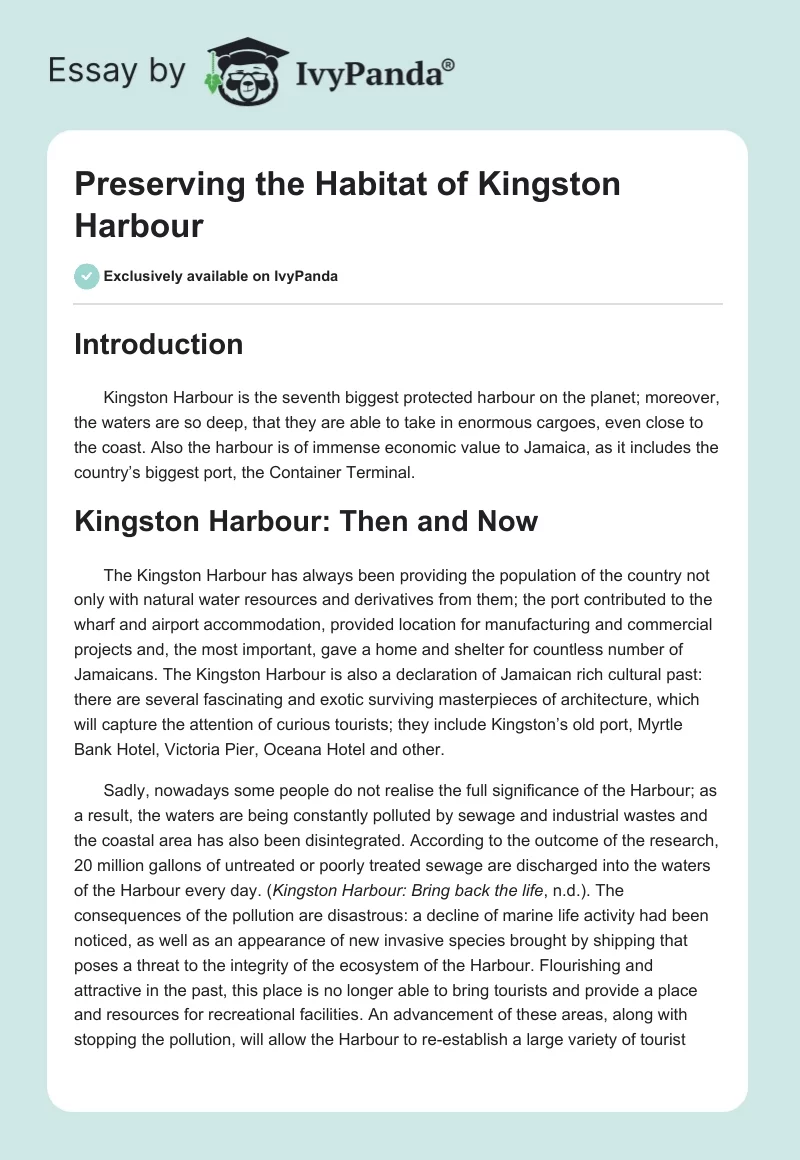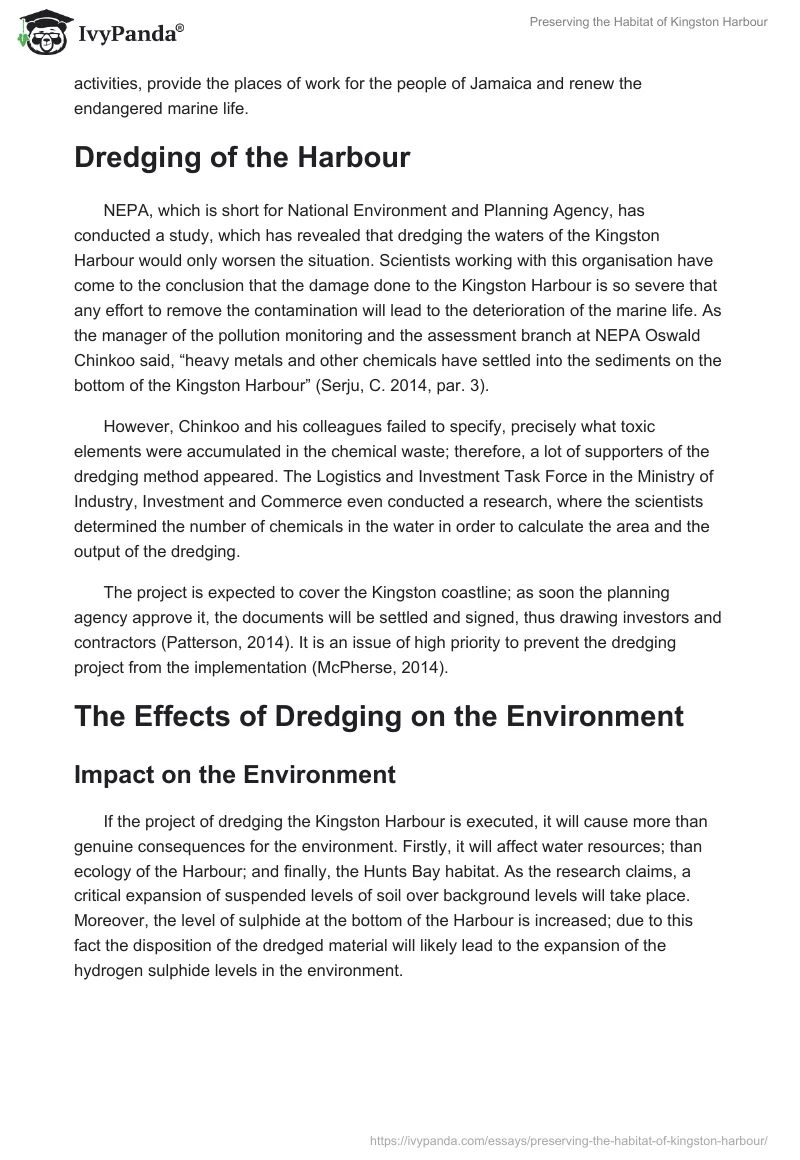Introduction
Kingston Harbour is the seventh biggest protected harbour on the planet; moreover, the waters are so deep, that they are able to take in enormous cargoes, even close to the coast. Also the harbour is of immense economic value to Jamaica, as it includes the country’s biggest port, the Container Terminal.
Kingston Harbour: Then and Now
The Kingston Harbour has always been providing the population of the country not only with natural water resources and derivatives from them; the port contributed to the wharf and airport accommodation, provided location for manufacturing and commercial projects and, the most important, gave a home and shelter for countless number of Jamaicans. The Kingston Harbour is also a declaration of Jamaican rich cultural past: there are several fascinating and exotic surviving masterpieces of architecture, which will capture the attention of curious tourists; they include Kingston’s old port, Myrtle Bank Hotel, Victoria Pier, Oceana Hotel and other.
Sadly, nowadays some people do not realise the full significance of the Harbour; as a result, the waters are being constantly polluted by sewage and industrial wastes and the coastal area has also been disintegrated. According to the outcome of the research, 20 million gallons of untreated or poorly treated sewage are discharged into the waters of the Harbour every day. (Kingston Harbour: Bring back the life, n.d.). The consequences of the pollution are disastrous: a decline of marine life activity had been noticed, as well as an appearance of new invasive species brought by shipping that poses a threat to the integrity of the ecosystem of the Harbour. Flourishing and attractive in the past, this place is no longer able to bring tourists and provide a place and resources for recreational facilities. An advancement of these areas, along with stopping the pollution, will allow the Harbour to re-establish a large variety of tourist activities, provide the places of work for the people of Jamaica and renew the endangered marine life.
Dredging of the Harbour
NEPA, which is short for National Environment and Planning Agency, has conducted a study, which has revealed that dredging the waters of the Kingston Harbour would only worsen the situation. Scientists working with this organisation have come to the conclusion that the damage done to the Kingston Harbour is so severe that any effort to remove the contamination will lead to the deterioration of the marine life. As the manager of the pollution monitoring and the assessment branch at NEPA Oswald Chinkoo said, “heavy metals and other chemicals have settled into the sediments on the bottom of the Kingston Harbour” (Serju, C. 2014, par. 3).
However, Chinkoo and his colleagues failed to specify, precisely what toxic elements were accumulated in the chemical waste; therefore, a lot of supporters of the dredging method appeared. The Logistics and Investment Task Force in the Ministry of Industry, Investment and Commerce even conducted a research, where the scientists determined the number of chemicals in the water in order to calculate the area and the output of the dredging.
The project is expected to cover the Kingston coastline; as soon the planning agency approve it, the documents will be settled and signed, thus drawing investors and contractors (Patterson, 2014). It is an issue of high priority to prevent the dredging project from the implementation (McPherse, 2014).
The Effects of Dredging on the Environment
Impact on the Environment
If the project of dredging the Kingston Harbour is executed, it will cause more than genuine consequences for the environment. Firstly, it will affect water resources; than ecology of the Harbour; and finally, the Hunts Bay habitat. As the research claims, a critical expansion of suspended levels of soil over background levels will take place. Moreover, the level of sulphide at the bottom of the Harbour is increased; due to this fact the disposition of the dredged material will likely lead to the expansion of the hydrogen sulphide levels in the environment.
Ecological consequences
The effect on the ecology lies in the straightforward destruction of the Harbour’s habitat. The secondary response of the environment to the dredging process is “assumed to relate to the formation of sediment plumes which may affect fish or benthos because of the smothering (clogging) effect of highly turbid waters on the gills of bivalves or fish, inability to detect predators or the limiting of the photosynthetic process in corals and plants” (Executive summary, 2014).
As for the Hunts Bay surroundings, changing the existing shoreline of the bay could alter the present system of natural circulations within the area (Andrews, Greenaway & Dennis, 1998). Furthermore, this will trigger the severe damaging of the environment by shifting of highly polluted forms to the west of the Harbour.
Economic Impact
Another aspect of Harbour’s life, which will be affected by the dredging of the area, is the economics of the region. As it was said above, the deflation of the dredged material will lead to the hydrogen sulphide spread in the waters. As a result, this could negatively impact any trading, which relies on benthic species in the proximity of the dredging discharge (Liu et al., 2014). Moreover, the dredging of the Hunts Bay will result in decreasing of the trading levels of the fisherman and will be acknowledged as a long-term negative consequence.
Reference
Andrews, J. E., Greenaway, A. M., & Dennis, P.F. (1998). Combined carbon isotope and C/N ratios as indicators of source and fate of organic matter in a poorly flushed, tropical estuary: Hunts Bay, Kingston Harbour, Jamaica. Estuarine, Coastal and Shelf Science. 46(5), 743–756.
Executive summary. (2014). Web.
Kingston Harbour: Bring back the life! [Image]. (n.d.). Web.
Liu. H., Broomfield, S., Duncan, A., Grant, L., Francis, P., Webber, D., & Webber, M. (2014) Assessing the phytoplankton and water quality of Kingston Harbour and Hellshire coast, Jamaica, after the implementation of a waste water treatment facility. Revista de Biología Tropical, 62(3), 241-248.
McPherse, T. (2014) Kingston Harbour dredging unlikely before May. The Jamaica Gleaner. Web.
Patterson, C. (2014). Technical studies for dredging of Kingston Harbour completed. Jamaica Information Service. Web.
Serju, C. (2014). Don’t stir the dirty water! NEPA says cleaning filthy Kingston Harbour not an option. The Jamaica Gleaner. Web.


